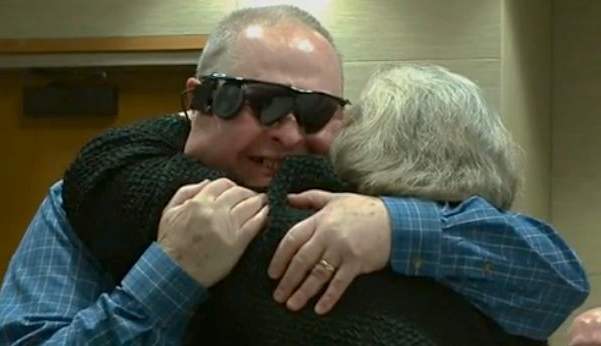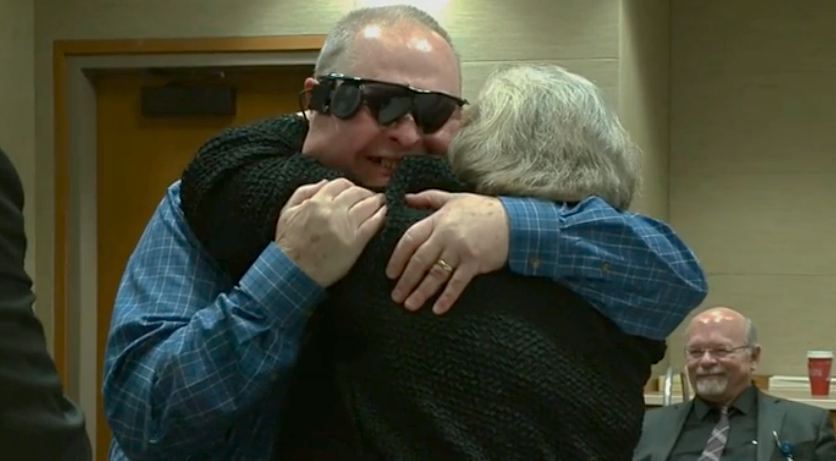Thanks to a medical breakthrough from the Mayo Clinic, a 68-year-old Minnesota man got to feel love at first sight again when he saw his wife for the first time in a decade.
Allen Zderad hasn’t seen his wife or grandchildren since his retina was ravaged by retinitis pigmentosa, a degenerative eye disease with no effective treatment or cure. The blindness also ended his professional career.
Enter Raymond Iezzi Jr., M.D., the Mayo Clinic researcher and ophthalmologist who determined that the former 3M employee from the Twin Cities was an ideal patient for a “bionic” eye implant.
In the first clinical trial in Minnesota, a tiny wafer-like chip with wires attached was embedded in his right eye during a surgical procedure in January. Two weeks later, the rest of the prosthetic device set into glasses was activated. The implant would send digital light wave signals to the optic nerve, bypassing the damaged retina.
POPULAR – Curry Power: Turmeric Compound Boosts Brain Cell Growth
For the first time in ten years, Zderad was able to make out human forms and outlines of objects, chairs and tables. He even saw his reflection as a silhouette in a window. But the first indication that the device worked came when he lunged out to grab his wife’s hands as she sat before him. They both broke into tears. (Watch the video below)
Dr. Iezzi was also moved. “This is great for this family. It’s also very unusual for a scientist like me to be able to actually apply outcomes of what we’ve worked on for years to help a patient. That’s very special.”
More adjustment is needed, along with hours of physical therapy and instruction, in order to make full use of the device, which was created by Second Sight. Zderad is only the 15th person in the United States to receive the implant.
ALSO: Diabetes Breakthrough: Scientists Coax Human Stem Cells Into Making Insulin
There are limitations: He will not be able to see the detail of faces or images, but he will be able to navigate through a room full of people, in church or in a mall without using his cane. It greatly improves his quality of life, and most of all, he can see his wife again. “It’s easy,” says Zderad, “she’s the most beautiful one in the room.”
(WATCH the video below or READ more from KARE-TV)
Story tip from Joel Arellano





















